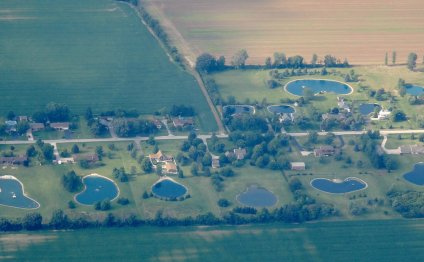
Ohio ponds
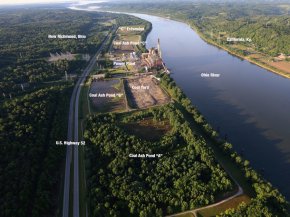 Photos by Emily Maxwell
Photos by Emily Maxwell
Video by Kevin Necessary and Libby Duebber
Arsenic. Lead. Mercury. Sulfuric Acid.
At a closed Duke Energy power plant, at least 10 billion pounds of coal ash containing these toxins and more are sitting on the banks of the Ohio River – a source of drinking water for more than 5 million people.
How the polluted ponds got there is a story that began long before environmental laws were created to keep people and drinking water safe from toxic waste.
How much longer the dumps might stay — and put our drinking water at risk — is a saga that’s just beginning to unfold.
“Think about what happened in Flint, (Michigan), and think about just how important this is to public health and safety, ” Clermont County Commissioner David Uible said. “To think that this day and age, that we have a water supply right next to these ash pits, it’s just unbelievable.”
VIDEO: What is coal ash?Local environmental experts agree.
“The worst-case scenario is that you get a major flood on the Ohio, then you get a breach of the dams and all that ash is washed into the Ohio River, ” said Paul Braasch, who leads Clermont County’s Office of Environmental Quality. “Then you have a plume of ash going down the Ohio River. That’s a big problem, and lot of bottled water to be handing out.”
As early as next year, Duke Energy has said it will begin tearing down the more than 60-year-old plant. The electric utility giant closed the plant in late 2014 just the U.S. Environmental Protection Agency was writing new federal standards for how coal ash ponds should be managed.
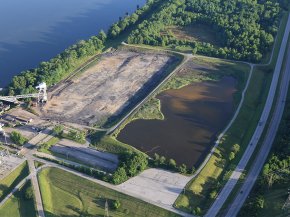 Although federal rules went into place in 2015 that set new standards for how coal ash ponds should be managed and closed, the guidelines don't apply to Beckjord because the plant closed in 2014. That means most of the rules for how the coal ash ponds are closed will fall under a limited set of Ohio laws governing coal ash ponds.
Although federal rules went into place in 2015 that set new standards for how coal ash ponds should be managed and closed, the guidelines don't apply to Beckjord because the plant closed in 2014. That means most of the rules for how the coal ash ponds are closed will fall under a limited set of Ohio laws governing coal ash ponds.
“Ohio is one of the largest coal ash producers in the country, and they have some of the worst state regulations, ” said Lisa Evans, an attorney with Earthjustice, a nonprofit D.C.-based environmental law firm. “These ponds fall into a very dangerous regulatory gap.”
The Beckjord plant, located about 20 miles east of Cincinnati, has been closed for two years. Emily Maxwell | WCPO
The company has been “conducting comprehensive scientific and engineering studies at the site to determine the best method to safely close ash basins, ” Duke’s Ohio and Kentucky spokeswoman Sally Thelen said.
But some say that might not be enough to guard against the biggest threats that ash-polluted ponds pose.
"The public should be very concerned, " Evans said. “These ponds are filled with some of the worst poisons for human health.”
Across the country, there is a “plethora of examples of problems” from these coal ash sites, said Frank Holleman, an attorney with the Southern Environmental Law Center. He points to incidents in Pennsylvania, Tennessee and North Carolina where lack of maintenance and attention at aging power plants led to massive spills of coal ash into nearby rivers and streams from ponds like those at Beckjord.
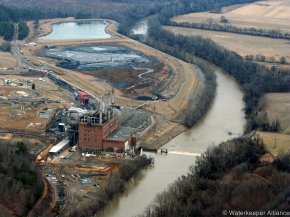 A WCPO review of government and environmental records reveals a history negligence and pollution at the Beckjord plant and a big dilemma with coal ash that stretches across Ohio.
A WCPO review of government and environmental records reveals a history negligence and pollution at the Beckjord plant and a big dilemma with coal ash that stretches across Ohio.
An aerial view of a coal yard next to an open coal ash pond at the Beckjord power plant. Emily Maxwell | WCPO
Among the findings:
- Across the state, a patchwork of laws regulating coal ash might be failing to guard against coal ash pollution to groundwater. At least three other sites like the Beckjord ponds are known to have polluted nearby waters, and 40 sites across the state are have unlined ponds. But because little groundwater monitoring occurs near ash ponds, state environmental regulators have admitted the risk of pollution is “poorly documented.”
It all adds up, environmentalists say, to a risky situation that could put our drinking water in jeopardy.
“I don’t know how anyone can dispute the fact that if you put coal ash in giant unlined pits right next to huge water ways that you can’t avoid contaminating the water, ” said Holleman, who has represented clients in lawsuits against electric companies including Duke.
‘Hoping Duke does the right thing’
As Duke considers its next steps, leaders in Clermont County have asked the company to outline its plans for the ash pond closures by early July.
Dan River coal ash spill. Photo credit: Waterkeeper Alliance
Specifically, the county wants the coal ash to be removed from at least two ash ponds on the site known as Ash Pond A and Ash Pond B. Leaders have also asked that Duke continue to monitor groundwater around the site as long as any coal ash remains there.
“We don’t want to be forced to close other water wells, ” Uible said. “We’re just hoping that Duke does the right thing.”
Elsewhere, Duke has come under fire for its mishandling of coal ash.
The company pled guilty last year to nine violations of the federal Clean Water Act after illegally discharging pollution from coal ash dumps at five plants in North Carolina.
Duke is now paying more than $100 million in fines and other penalties to clean up the damage after more than 39, 000 tons of coal ash spilled into the Dan River near Eden, North Carolina.
“If something like that were to happen on the Ohio River, it would be catastrophic, ” Uible said.
Dan River spill after Duke Energy cleaned the site. Photo credit: Waterkeeper Alliance
Following pressure from state lawmakers and advocacy groups, Duke is now removing the coal ash it kept in unlined pits at 14 sites across North Carolina.
Meanwhile, leaders in other states have joined North Carolina in calling for more oversight of coal ash ponds.
In Illinois, stronger protections are needed “to make sure no company can simply cap their toxic waste and walk away without a full clean up plan, ” said Illinois State Senator Melinda Bush in a May press release. “We must make sure these sites have positive re-use opportunities so that they can be a future financial asset to local communities.”
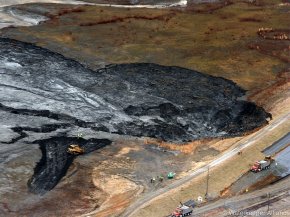
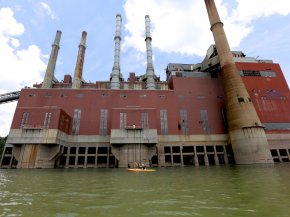
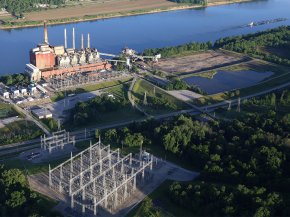
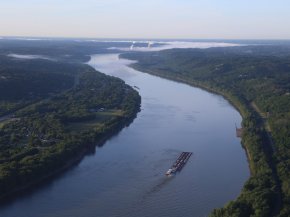
Share this Post
Related posts
Chagrin River steelhead fishing Report Port Clinton
Walleye fishing has been spotty on the sandbar between Vermilion and Lorain, north of Edgewater State Park (Cleveland) in…
Read MoreOhio steelhead fishing reports
Steelheaders wetting their lines for fall running chrome on a Lake Erie tributary Fall steelheading is an exciting time…
Read More









